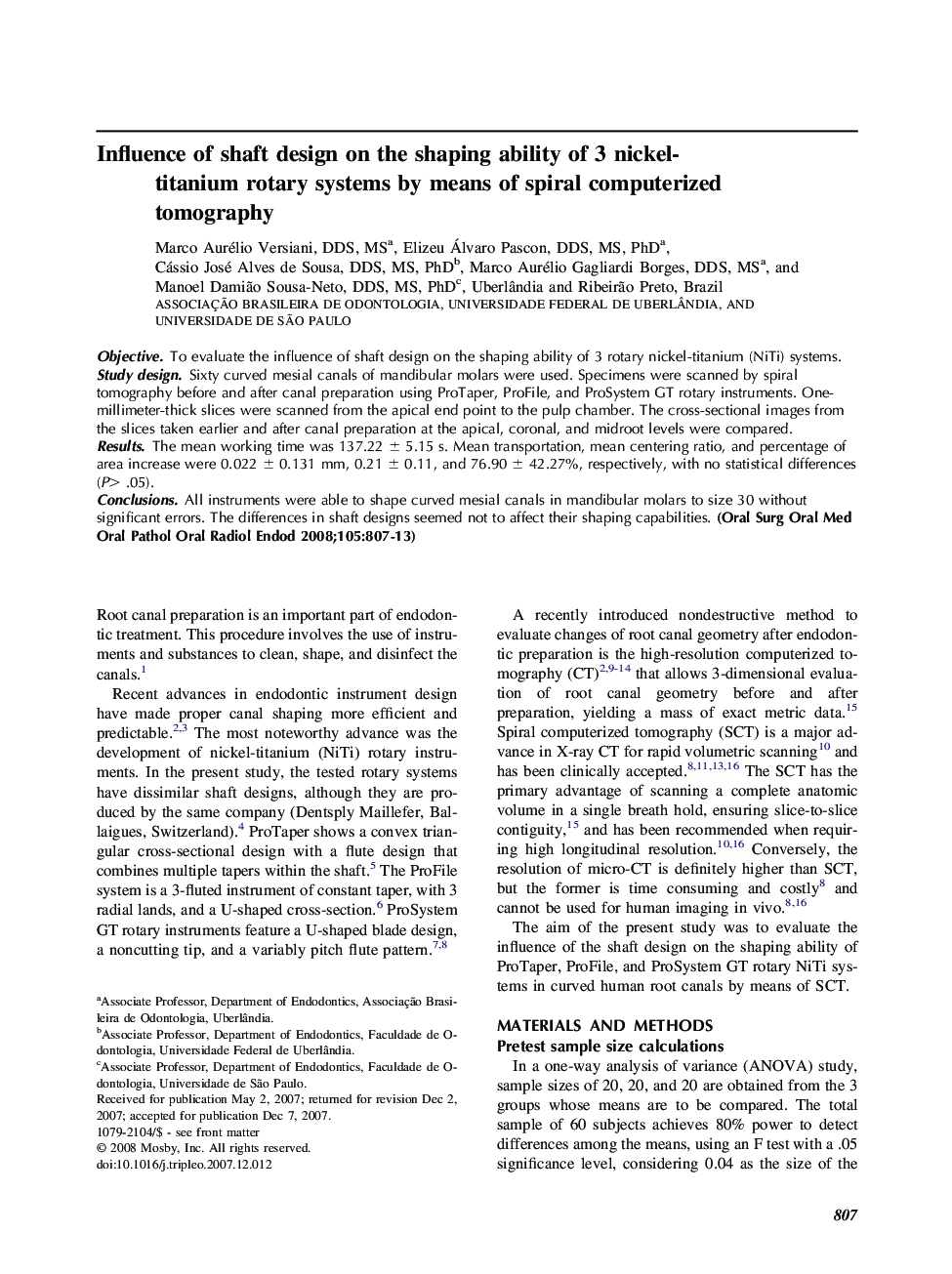| Article ID | Journal | Published Year | Pages | File Type |
|---|---|---|---|---|
| 3168686 | Oral Surgery, Oral Medicine, Oral Pathology, Oral Radiology, and Endodontology | 2008 | 7 Pages |
ObjectiveTo evaluate the influence of shaft design on the shaping ability of 3 rotary nickel-titanium (NiTi) systems.Study designSixty curved mesial canals of mandibular molars were used. Specimens were scanned by spiral tomography before and after canal preparation using ProTaper, ProFile, and ProSystem GT rotary instruments. One-millimeter-thick slices were scanned from the apical end point to the pulp chamber. The cross-sectional images from the slices taken earlier and after canal preparation at the apical, coronal, and midroot levels were compared.ResultsThe mean working time was 137.22 ± 5.15 s. Mean transportation, mean centering ratio, and percentage of area increase were 0.022 ± 0.131 mm, 0.21 ± 0.11, and 76.90 ± 42.27%, respectively, with no statistical differences (P> .05).ConclusionsAll instruments were able to shape curved mesial canals in mandibular molars to size 30 without significant errors. The differences in shaft designs seemed not to affect their shaping capabilities.
